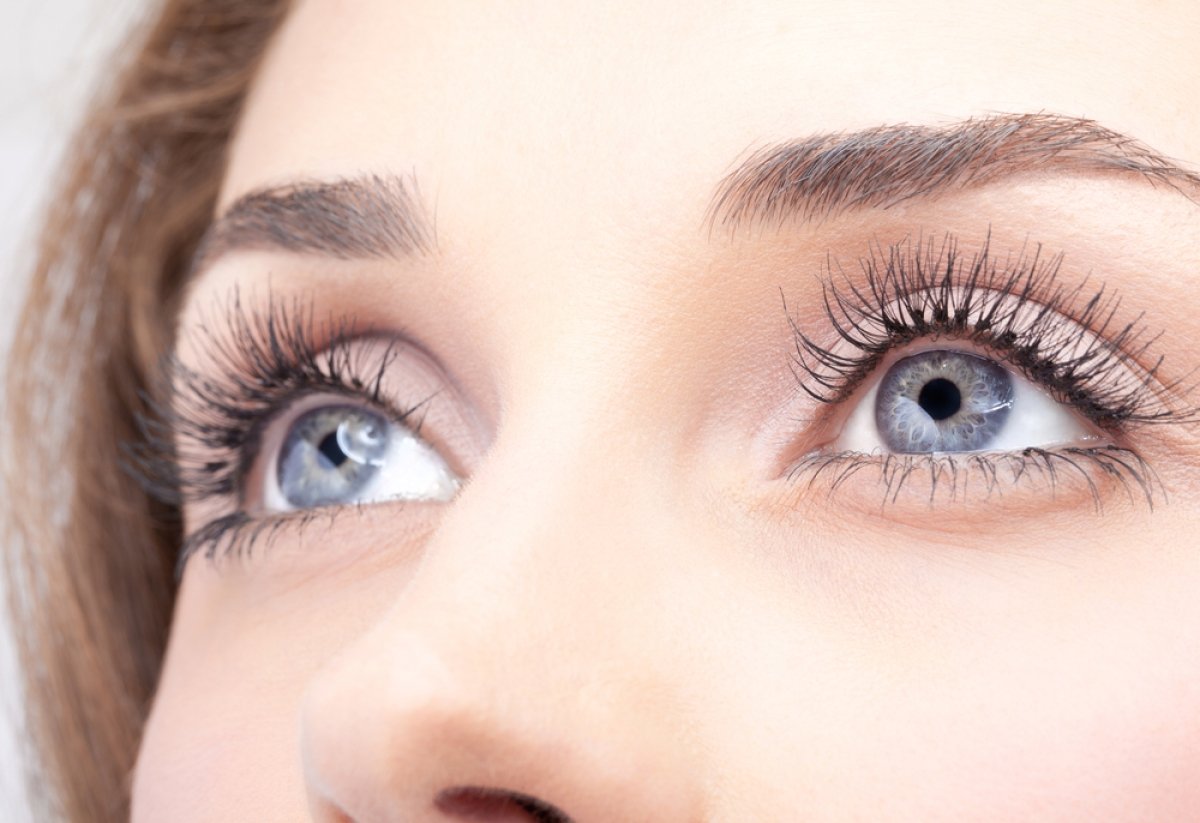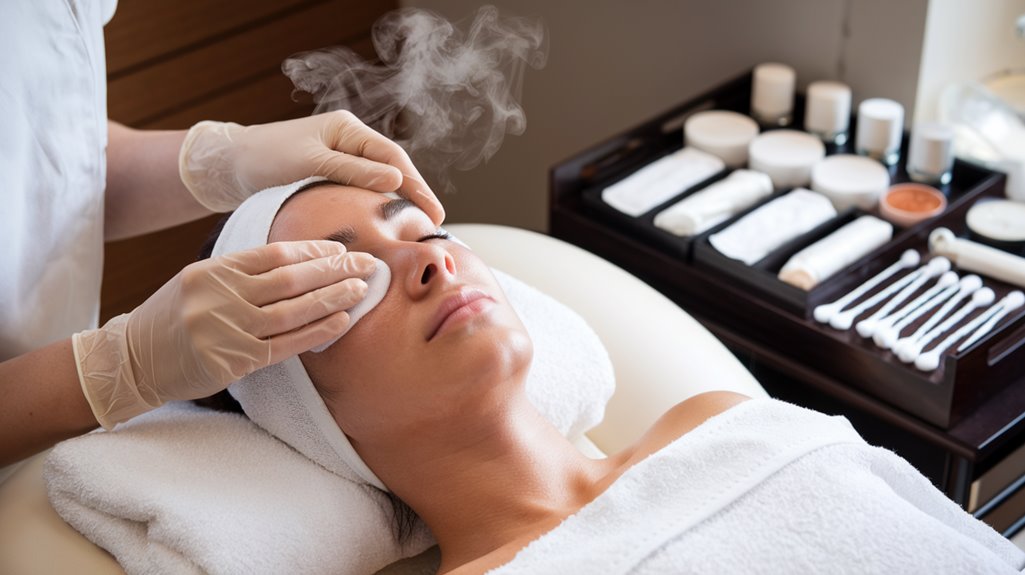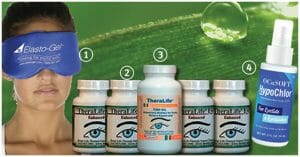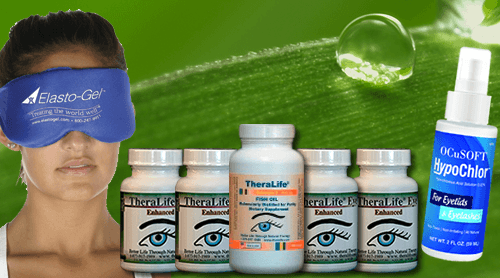To effectively manage blepharitis, consider integrating TheraLife’s comprehensive approach to cure blepharitis – which includes their specialized products designed to maintain eyelid hygiene. Start with a daily routine utilizing TheraLife’s products alongside warm compresses and eyelid scrubs. These products can help enhance overall eye comfort and health by offering relief from dryness and inflammation. Additionally, TheraLife’s supplements and eye drops are formulated to support ocular health, potentially reducing the need for prescription medications. Embrace dietary changes such as increasing omega-3 intake and reducing sugar, which complement the benefits of TheraLife’s natural and holistic remedies. Consistent use of TheraLife’s product line can aid in controlling blepharitis symptoms and preventing recurrences, providing a sustainable solution for managing this chronic condition. Explore TheraLife’s offerings to discover more ways to manage your eye health effectively.
Best Blepharitis-Dry Eye Oral Treatment That Works – TheraLIfe
Add To CartKey Takeaways
- Maintain a consistent eyelid hygiene routine with gentle cleansing and warm compresses to manage blepharitis symptoms.
- Use eyelid scrub products containing tea tree oil or hypochlorous acid to target bacteria and reduce inflammation.
- Consult a healthcare professional for a tailored treatment plan, including potential prescription medications for severe cases.
- Incorporate dietary changes like increasing omega-3 intake and reducing sugar to support eye health and reduce inflammation.
- Complement medical treatments with home remedies like warm compresses and diluted tea tree oil for additional relief.
Understanding the Causes of Blepharitis
Although blepharitis is a common eye condition, understanding its causes is essential for effective management.
Primarily, bacterial infections and dysfunction of the oil glands contribute to this condition. The eyelids host numerous oil glands that secrete lipids, vital for maintaining a stable tear film. When these glands are blocked or infected, inflammation can result, leading to blepharitis. Bacterial infections, particularly by Staphylococcus species, exacerbate this inflammation, promoting further gland dysfunction. Establishing a daily eyelid cleaning routine can help prevent bacterial proliferation and support overall eye health.
You must recognize that poor eyelid hygiene facilitates bacterial proliferation and gland obstruction.
Addressing these underlying causes requires meticulous cleansing of the eyelid margins to remove debris and prevent bacterial growth. By managing bacterial infections and maintaining oil gland function, you can greatly reduce the occurrence and severity of blepharitis.
Identifying the Symptoms and Types of Blepharitis
Blepharitis presents with a range of symptoms that are vital for accurate diagnosis and treatment. Recognizing these symptoms and their differences is essential for symptom differentiation and identifying common triggers. You might observe:
- Irritation and redness: Persistent inflammation causes the eyelid margins to become red and sore.
- Crusting and flaking: Accumulation of skin flakes or crusts at the base of the eyelashes is common.
- Gritty sensation: A feeling of sand or grit in the eyes can indicate inflammation.
- Dry eyes or excessive tearing: The tear film becomes unstable, leading to dryness or tear overproduction.
Distinguishing between anterior (front of the eyelid) and posterior (inner edge) blepharitis types allows for tailored management. Each type may have specific triggers, such as bacterial infections or gland dysfunction, necessitating different approaches. It’s important to note that meibomian gland dysfunction is a common cause of posterior blepharitis, highlighting the need for targeted treatments.
Establishing a Daily Eyelid Hygiene Routine
To effectively manage blepharitis, establish a daily eyelid hygiene routine utilizing gentle cleansing techniques. Choose appropriate eyelid scrub products to remove debris and reduce inflammation. Consistency in this routine enhances its benefits and helps maintain long-term eye health. Regular eyelid hygiene is crucial to minimize symptom recurrence and prevent blepharitis from affecting your daily life.
Gentle Cleansing Techniques
When dealing with blepharitis, establishing a daily eyelid hygiene routine is essential for effectively managing symptoms.
Begin by incorporating gentle cleansing techniques to alleviate inflammation and discomfort. Start with warm compresses to loosen debris along the eyelid margins. This process enhances circulation and prepares your eyelids for the next steps.
Follow these steps for ideal results:
- Warm Compresses: Apply a warm, damp cloth over closed eyelids for 5-10 minutes.
- Eyelid Massage: Gently massage your eyelids using a clean fingertip, moving in circular motions to promote gland function.
- Rinse Eyelids: Use lukewarm water to rinse any loosened debris or oils.
- Pat Dry: Carefully dry your eyelids with a clean towel, avoiding excessive rubbing.
Implementing these methods will support effective blepharitis management. For additional support, consider using hypochlorous acid solutions which are effective against microbial agents and can enhance your eyelid hygiene routine.
Eyelid Scrub Products
Incorporating eyelid scrub products into your hygiene routine remarkably enhances blepharitis management. Selecting scrubs with effective eyelid scrub ingredients, such as tea tree oil or hypochlorous acid, targets bacteria and reduces inflammation. These ingredients are known for their antimicrobial and soothing properties. Prioritize products specifically designed for ocular use to guarantee safety and efficacy. Apply the scrub with precise scrub application techniques to maximize benefits. First, wash your hands thoroughly. Use a clean cotton pad or swab to apply the product gently along the lash line. Avoid pressing too hard to prevent irritation. Allow the scrub to sit for a moment to work its magic, then rinse it off with lukewarm water. Consistent application guarantees ideal results in managing eyelid inflammation. Regular follow-ups with eye care professionals are crucial for monitoring and treatment adjustment.
Consistent Routine Benefits
Establishing a daily eyelid hygiene routine markedly enhances blepharitis management by preventing the buildup of debris and bacteria. Consistency in this routine offers numerous benefits for your eyelid health. By adhering to a regular schedule, you can reduce inflammation and discomfort effectively. Here’s how maintaining a consistent routine aids your eyelid health:
- Reduces Irritation: Consistent cleaning minimizes debris, reducing irritation.
- Lowers Infection Risk: Regular hygiene prevents bacterial growth, lowering infection risks.
- Promotes Healing: A stable routine supports natural healing, improving overall comfort.
- Enhances Treatment Efficacy: Routine care complements other treatments, boosting overall effectiveness.
Incorporating hot compresses into your routine can help unclog meibomian glands, thus aiding in maintaining their normal function and alleviating symptoms associated with blepharitis.
Exploring Over-the-Counter and Prescription Treatments
When treating blepharitis, consider popular over-the-counter options like artificial tears and eyelid cleansers, which can alleviate symptoms. For more severe cases, prescription medications such as antibiotics and steroid eye drops offer substantial benefits by targeting underlying inflammation and infection. Comparing the efficacy of these treatments will help you determine the most effective approach for your specific condition. It is also important to maintain regular eyelid hygiene to reduce bacterial growth and prevent flare-ups, as this plays a crucial role in managing blepharitis symptoms effectively.
Popular OTC Options
Curious about effective over-the-counter options for managing blepharitis?
Let’s debunk some blepharitis myths and treatment misconceptions. Over-the-counter treatments can be both accessible and effective in alleviating symptoms.
Key options include:
- Lid Scrubs: These help remove debris and oil buildup, a common misconception that regular cleansing isn’t necessary.
- Artificial Tears: They provide moisture and relief, debunking the myth that eye drops are ineffective for inflammation.
- Warm Compresses: This simple remedy can reduce redness and swelling, correcting the misconception that only medications provide relief.
- Antibiotic Ointments: Available OTC, they help combat bacteria, contrary to the belief that prescriptions are always required.
Always consult with a healthcare professional before starting any treatment. Consistent treatment regimens, including eyelid hygiene, are essential for managing chronic conditions like blepharitis effectively.
Prescription Medication Benefits
While over-the-counter treatments for blepharitis offer accessible relief, prescription medications bring targeted efficacy to the table. You’ll find that prescription benefits include more precise formulations tailored to address specific causes of eyelid inflammation. These medications often contain higher concentrations of active ingredients, providing enhanced therapeutic effects. Common prescription medication types for blepharitis include topical antibiotics, such as erythromycin or bacitracin, which target bacterial infections. Steroid eye drops may also be prescribed to reduce inflammation and alleviate symptoms more effectively than their over-the-counter counterparts. For cases involving Demodex mites, your doctor might recommend ivermectin. In severe cases, such as Demodex keratitis, prescription medications can help manage the condition and prevent further complications.
Comparing Treatment Efficacy
Are you trying to determine whether over-the-counter or prescription treatments are more effective for managing blepharitis? Conducting a thorough treatment comparisons and efficacy analysis reveals valuable insights.
Over-the-counter options are generally more accessible and include eyelid wipes and artificial tears. Prescription treatments, however, offer stronger formulations, such as antibiotic ointments or steroid eye drops, for more severe cases.
To guide your choice:
- Effectiveness: Prescription treatments often show higher efficacy in severe blepharitis cases.
- Accessibility: Over-the-counter products are easily obtainable without a doctor’s visit.
- Cost: Over-the-counter options are typically more affordable, but may require prolonged use.
- Side Effects: Prescription treatments may have more potential side effects, necessitating medical supervision.
Analyzing these factors helps you make an informed decision tailored to your condition’s severity. In about 30% of chronic blepharitis cases, Demodex mites are involved, highlighting the importance of identifying the underlying cause to choose the most effective treatment strategy.
Implementing Dietary and Lifestyle Changes
Addressing blepharitis through dietary and lifestyle changes can be an effective component of managing this chronic condition. Dietary adjustments, such as increasing omega-3 fatty acids and decreasing sugar intake, can reduce inflammation. Lifestyle modifications, like proper eye hygiene and stress management, support overall eye health and can prevent flare-ups.
Here’s a quick reference table:
| Dietary Adjustments | Lifestyle Modifications | Benefits |
|---|---|---|
| Increase omega-3 intake | Practice eye hygiene | Reduces inflammation |
| Reduce sugar consumption | Manage stress | Prevents flare-ups |
| Stay hydrated | Get adequate sleep | Improves eye health |
| Limit processed foods | Exercise regularly | Enhances immunity |
| Eat more leafy greens | Avoid smoking | Supports eye function |
Implement these changes consistently to help control blepharitis symptoms effectively.
Using Home Remedies and Natural Solutions
Exploring home remedies and natural solutions can be a valuable strategy for managing blepharitis symptoms.
Utilizing homeopathy remedies and herbal treatments may alleviate discomfort and reduce inflammation.
Here’s a precise plan to guide you:
- Warm Compresses: Apply a warm, moist compress to your eyelids. This helps dissolve any crust and soothes irritation.
- Tea Tree Oil: Dilute with a carrier oil and apply to your eyelids. Its natural anti-inflammatory properties may ease symptoms.
- Omega-3 Supplements: Consume fish oil or flaxseed oil to support eyelid health. These fatty acids can reduce inflammation.
- Chamomile Wash: Use chamomile tea as a gentle eyelid wash. It’s known for its soothing properties and can aid in reducing irritation.
These approaches can complement medical treatments effectively.
Preventing Recurrence and Managing Chronic Blepharitis
Managing chronic blepharitis requires a strategic approach to prevent recurrence and maintain eye health.
Start with consistent eyelid hygiene, using warm compresses and gentle cleansing to remove debris and reduce inflammation.
Lifestyle adjustments are essential; consider incorporating a balanced diet rich in omega-3 fatty acids to support ocular health.
Avoid known irritants, such as smoke or allergens, that could exacerbate symptoms.
Stress management is equally important, as stress can trigger flare-ups. Practice relaxation techniques like deep breathing or meditation to keep stress levels in check.
Regular eye examinations are vital to monitor progress and adjust treatment as needed.
Frequently Asked Questions
Can Blepharitis Affect My Vision Permanently?
Blepharitis can cause vision changes, but it’s unlikely to lead to permanent vision impairment if managed properly.
You might experience temporary blurriness due to inflammation and debris, but long-term effects are rare.
It’s essential to maintain good eyelid hygiene and follow treatment guidelines to prevent complications.
If left untreated, severe cases could potentially harm the cornea, affecting vision.
Consult an eye care professional to guarantee proper management and prevent permanent issues.
Are There Any Specific Makeup Products to Avoid With Blepharitis?
When dealing with blepharitis, avoid makeup with harsh preservatives, avoid makeup with fragrances, avoid makeup with dyes.
Prioritize eye hygiene by removing makeup thoroughly each night.
Look for products labeled hypoallergenic, look for products free of parabens, look for products free of sulfates.
These makeup ingredients can exacerbate inflammation, leading to discomfort.
Maintaining proper eye hygiene and choosing suitable products help prevent further irritation and promote healthier eyelids.
How Long Does It Typically Take to See Improvement in Blepharitis Symptoms?
When you’re managing blepharitis, symptom improvement timelines can vary.
Typically, you might begin noticing changes within a few days to weeks, depending on your adherence to treatment.
However, treatment response variability is common due to individual differences.
Consistent eyelid hygiene and prescribed therapies greatly influence the speed of improvement.
It’s essential to follow your healthcare provider’s recommendations closely for best results and consult them if symptoms persist beyond expectations.
Can Blepharitis Be Linked to Other Eye Conditions?
Yes, blepharitis can be linked to other eye conditions.
It’s often associated with dry eye syndrome, where the blepharitis causes inflammation affecting tear film stability.
You might also notice connections to conjunctivitis or meibomian gland dysfunction.
These associated eye conditions can exacerbate symptoms, making management essential.
Understanding these links helps in effective treatment, ensuring you address not just blepharitis but any contributing or resulting conditions for thorough eye health.
Is There a Genetic Predisposition to Developing Blepharitis?
You might wonder if there’s a genetic predisposition to developing blepharitis.
Yes, genetic factors can play a role. If you have a family history of the condition, you could be more susceptible.
While genetics aren’t the sole cause, they can influence your risk.
It’s important to take into account family history when evaluating your likelihood of developing blepharitis and to discuss this with your healthcare provider for an all-encompassing approach.
Conclusion
Achieving relief from blepharitis can be more manageable with the help of TheraLife.com’s range of products. These products are designed to support customers in maintaining eyelid hygiene, managing inflammation, and preventing recurrence of symptoms. TheraLife’s offerings, including natural remedies and dietary supplements, play a crucial role in soothing inflammation and enhancing eye health. By integrating consistent use of TheraLife products into your routine, you can effectively manage chronic blepharitis, ensuring your eyes remain healthy and comfortable. Stay dedicated to the regimen, and you’ll enjoy clearer, irritation-free vision.





